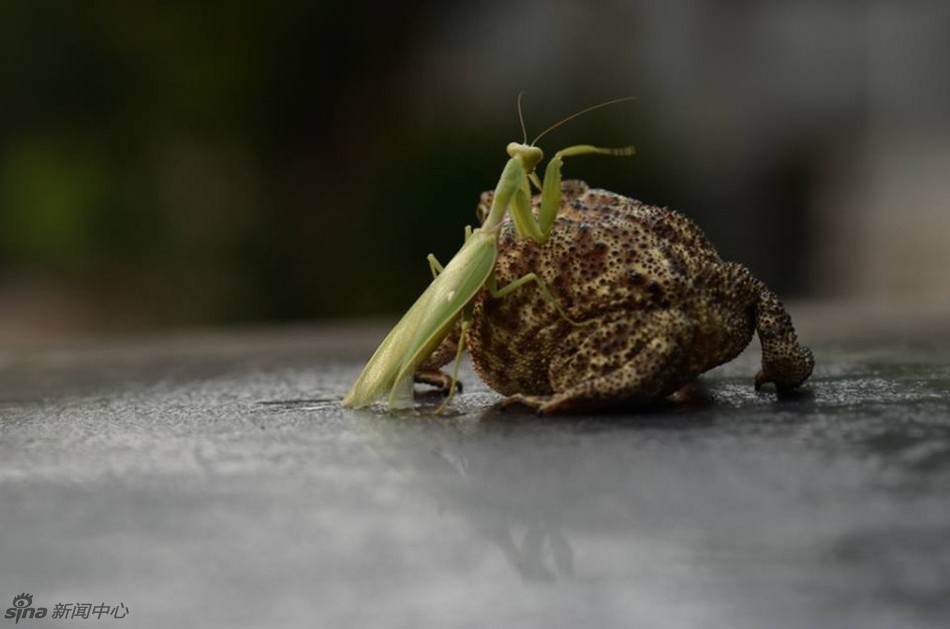
The narcotic causes a very intense trip, with some describing it as feeling “reborn” or “a total fusion with God”. AFPĥ-MeO-DMT, the chemical that the Sonoran desert toad secretes, has long been used by people to induce a psychedelic high by licking the poisonous amphibian’s back. The toad secretes a milky substance containing various toxins, among which is 5-MeO-DMT – a psychoactive compound that triggers hallucinogenic effects. The toxins emitted by one Sonoran desert toad may be enough to kill a fully grown dog, according to the Arizona-Sonora Desert Museum. It is said that the toad secretes Bufotenin as a defensive measure and it can be deadly to other animals, including dogs. This chemical is a natural psychedelic, which can be snorted, inhaled or smoked, that can create short but intense psychedelic experiences, with hallucinogenic effects that are significantly strong.Īlso read: Can magic mushrooms treat severe depression?įive-MeO-DMT remains effectively illegal in the United States, where it is classified as a Schedule 1 substance.


The toad is active from late May to September but principally, they are active during the summer rainy season.Īccording to experts, a chemical called Bufotenin, a white milky substance also known as ‘5-MeO-DMT’, can be found on the toad’s skin. The toad, according to the Aquarium of the Pacific in Long Beach, California, remains underground the heat or cold of the day, depending on the seasons. While the animal is listed as “Least Concern” on the International Union for the Conservation of Nature Red List, they are considered threatened in New Mexico because of habitat loss, roadway mortality and overcollection for drug use. The Sonoran desert toad is one of the largest toads native to North America, measuring about seven inches long and also have remarkably long lives their life span could be at least 10 years and possibly as many as 20. Sonoran desert toads, which are also called Colorado River toads, are primarily found in Sonoran Desert of Arizona and Mexico, though their range extends into New Mexico and California. We take a closer look at the reasons why people, as unbelievable as it may sound, are licking this toad. 2) Ecology Asia.- National Park Service November 1, 2022 Nonetheless, he says, “I certainly like the sentiments in the paper, and I’m all for conservation of native amphibians.” “They are not really interested in biodiversity conservation but in economic questions,” Wanger says.Ī scientist who has studied the ecological damage from crazy ants, Dennis O’Dowd of Monash University in Melbourne, Australia, notes that the researchers now need to investigate the other links in their hypothesis, such as whether the toads’ periodic gorging on yellow crazy ants has a lasting effect on ant populations. Making a case for toads as protectors of cacao might rouse new enthusiasm for protecting native amphibians, as Sulawesi residents have similar priorities to those in agricultural communities the world over. One kind of native ant preys on insects that leave sticky lesions on cacao pods, for example, and fewer sticky spots means the pods attract fewer visits from flies tainted with a pathogen causing pod rot. She and a colleague have surveyed the scientific literature on how the diversity of ants can affect diseases and pests in coffee and cacao plantations.

The study’s suggestion that the Sulawesi toads ultimately help control pests in the cacao plantations is plausible, Philpott says. Other researchers have shown that a rich diversity of native ants helps keep cacao pests and diseases in check.

Toads feasting on yellow crazy ants may help keep the invaders from crowding out the native ants in cacao plantations. About every three months, the toads leave their usual forest home and surge through the cacao plantations to breed in the water of neighboring rice fields. The test plots lay in cacao plantations, and the researchers speculate that the toads’ taste for ants may turn out to be a boon for cacao pest control.


 0 kommentar(er)
0 kommentar(er)
